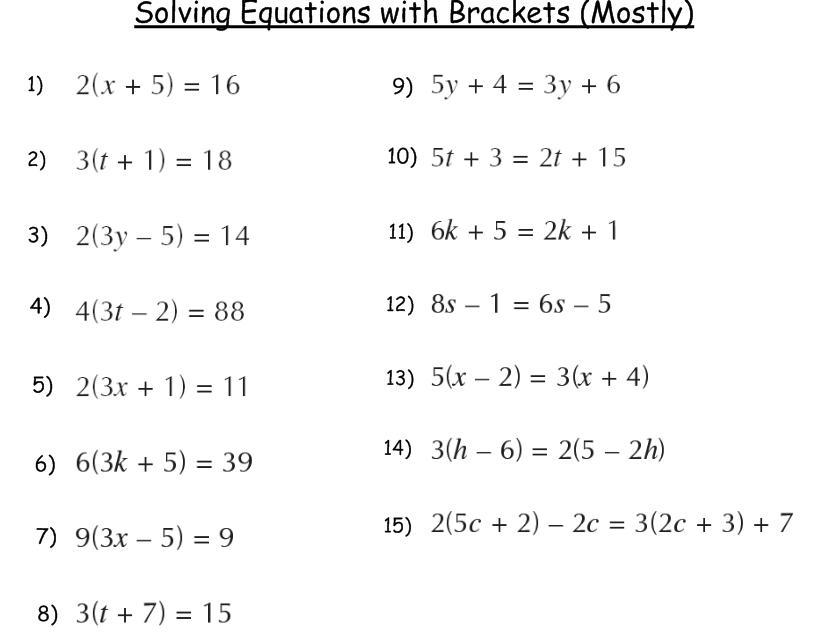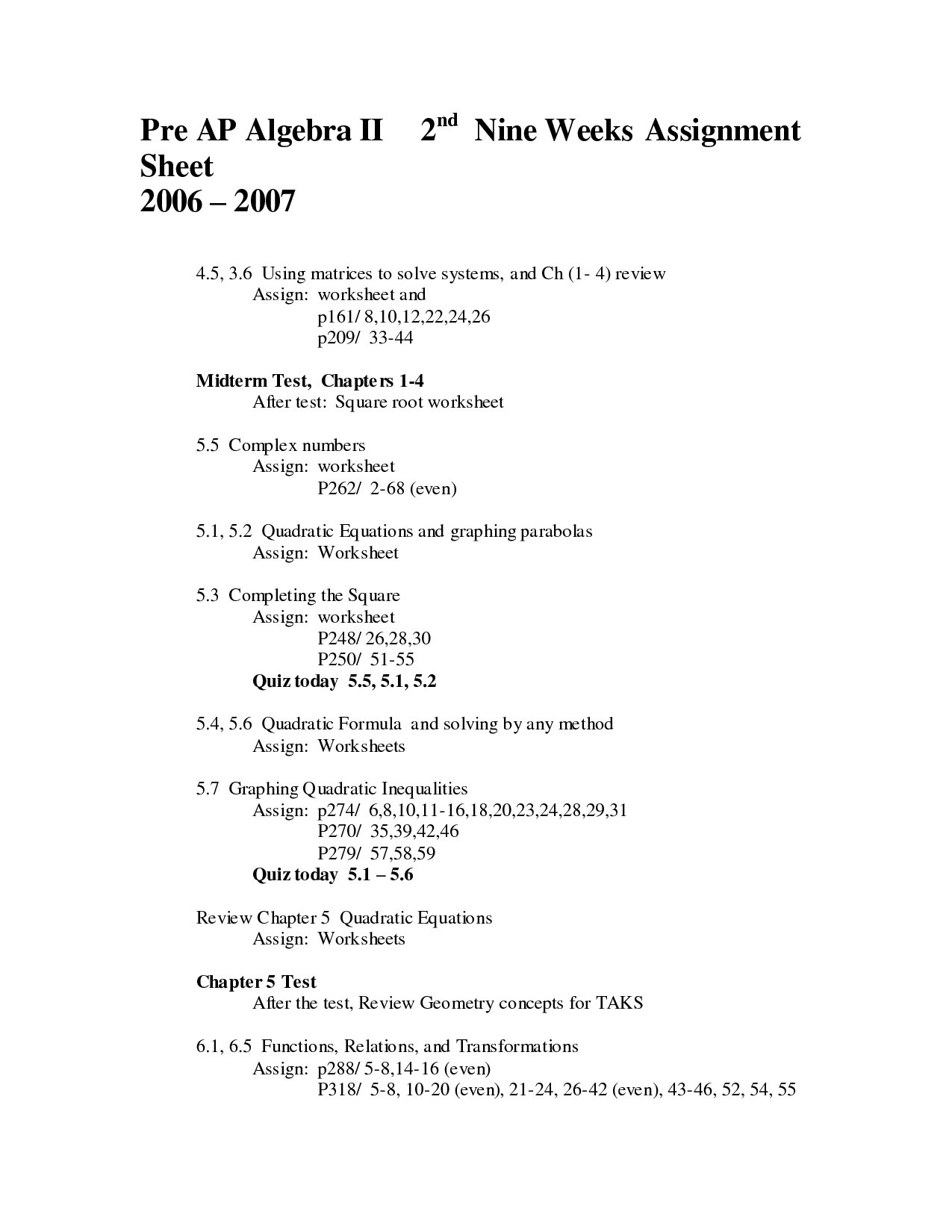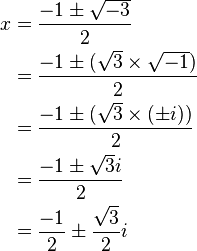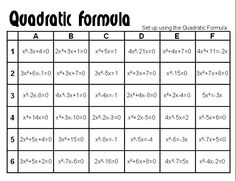Using the Quadratic Formula Worksheet
The Quadratic Formula Worksheet is a valuable resource for students studying algebra or calculus. It provides a variety of practice problems that focus on solving quadratic equations using the quadratic formula. This worksheet is designed to enhance understanding of this essential mathematical concept by providing a clear and structured approach to its application. Whether you are a high school student preparing for a test or a college student reviewing quadratic equations, this worksheet will help you master the subject.
Table of Images 👆
More Other Worksheets
Kindergarten Worksheet My RoomSpanish Verb Worksheets
Cooking Vocabulary Worksheet
DNA Code Worksheet
Meiosis Worksheet Answer Key
Art Handouts and Worksheets
7 Elements of Art Worksheets
All Amendment Worksheet
Symmetry Art Worksheets
Daily Meal Planning Worksheet
What is the quadratic formula?
The quadratic formula is \[ x = \frac{-b \pm \sqrt{b^2 - 4ac}}{2a} \] which is used to find the solutions of a quadratic equation in the form of ax^2 + bx + c = 0.
When is it necessary to use the quadratic formula?
The quadratic formula is necessary to use when solving quadratic equations that cannot easily be factored or solved by other methods. It provides a systematic approach to finding the roots of a quadratic equation of the form ax^2 + bx + c = 0, where a, b, and c are constants. It is especially useful when dealing with complex or irrational solutions that cannot be easily determined by factoring or other techniques.
What are the three coefficients needed to use the quadratic formula?
The three coefficients needed to use the quadratic formula are the coefficient of the squared term (a), the coefficient of the linear term (b), and the constant term (c) in a quadratic equation of the form ax^2 + bx + c = 0.
How do you identify the values of a, b, and c in a quadratic equation?
In a quadratic equation written in the form of ax^2 + bx + c = 0, the values of a, b, and c can be identified by comparing the coefficients in the equation. The coefficient of the x^2 term is 'a', the coefficient of the x term is 'b', and the constant term is 'c'. By isolating these values from the equation, you can determine the specific values of 'a', 'b', and 'c' in the quadratic equation.
How do you apply the quadratic formula to find the solutions of a quadratic equation?
To apply the quadratic formula to find the solutions of a quadratic equation in the form of ax^2 + bx + c = 0, you first identify the values of a, b, and c. Then, substitute these values into the quadratic formula x = (-b ± ?(b^2 - 4ac)) / 2a. After plugging in the values, simplify the formula and solve for x to find the two possible solutions of the quadratic equation.
What is the meaning of the discriminant in the quadratic formula?
The discriminant in the quadratic formula is a mathematical expression that helps determine the nature of the roots of a quadratic equation. It is used to indicate whether the equation has real and distinct, real and equal, or complex roots, based on the value of the discriminant. Specifically, if the discriminant is positive, the equation has two distinct real roots; if it is zero, the roots are real and equal; and if it is negative, the roots are complex.
How do you use the discriminant to determine the nature of the solutions?
You can use the discriminant in the quadratic formula (bČ - 4ac) to determine the nature of the solutions of a quadratic equation. If the discriminant is greater than 0, the equation has two distinct real solutions. If the discriminant is equal to 0, the equation has one repeated real solution. If the discriminant is less than 0, the equation has two complex solutions. By analyzing the discriminant, you can quickly determine whether a quadratic equation has real, distinct real, or complex solutions.
What is the significance of the discriminant being equal to zero?
When the discriminant of a quadratic equation is equal to zero, it means that the equation has exactly one real solution. This is significant because it indicates that the quadratic equation has a repeated or double root, meaning that the parabola representing the equation touches but does not cross the x-axis at a single point. In geometric terms, this represents a scenario where the line representing the equation is tangent to the x-axis, demonstrating a unique relationship between the equation and its graphical representation.
How can you use the quadratic formula to solve real-life problems?
The quadratic formula can be used to solve real-life problems by providing a method to find the values of a variable in situations that can be modeled by a quadratic equation. For example, it can be utilized in physics to determine the maximum height a ball will reach when thrown, in finance to calculate the break-even points for a business, or in engineering to analyze the trajectory of a projectile. By plugging the coefficients of the quadratic equation into the formula, one can find the solutions that represent meaningful outcomes in various practical scenarios.
What are some common mistakes to avoid when using the quadratic formula?
Some common mistakes to avoid when using the quadratic formula include switching the signs in the formula (especially the middle sign), incorrectly identifying the coefficients of the quadratic equation, not simplifying the equation before plugging it into the formula, and forgetting to account for complex roots when necessary. Additionally, it's important to be cautious of errors when performing arithmetic operations while solving for the roots using the formula.
Have something to share?
Who is Worksheeto?
At Worksheeto, we are committed to delivering an extensive and varied portfolio of superior quality worksheets, designed to address the educational demands of students, educators, and parents.
























Comments